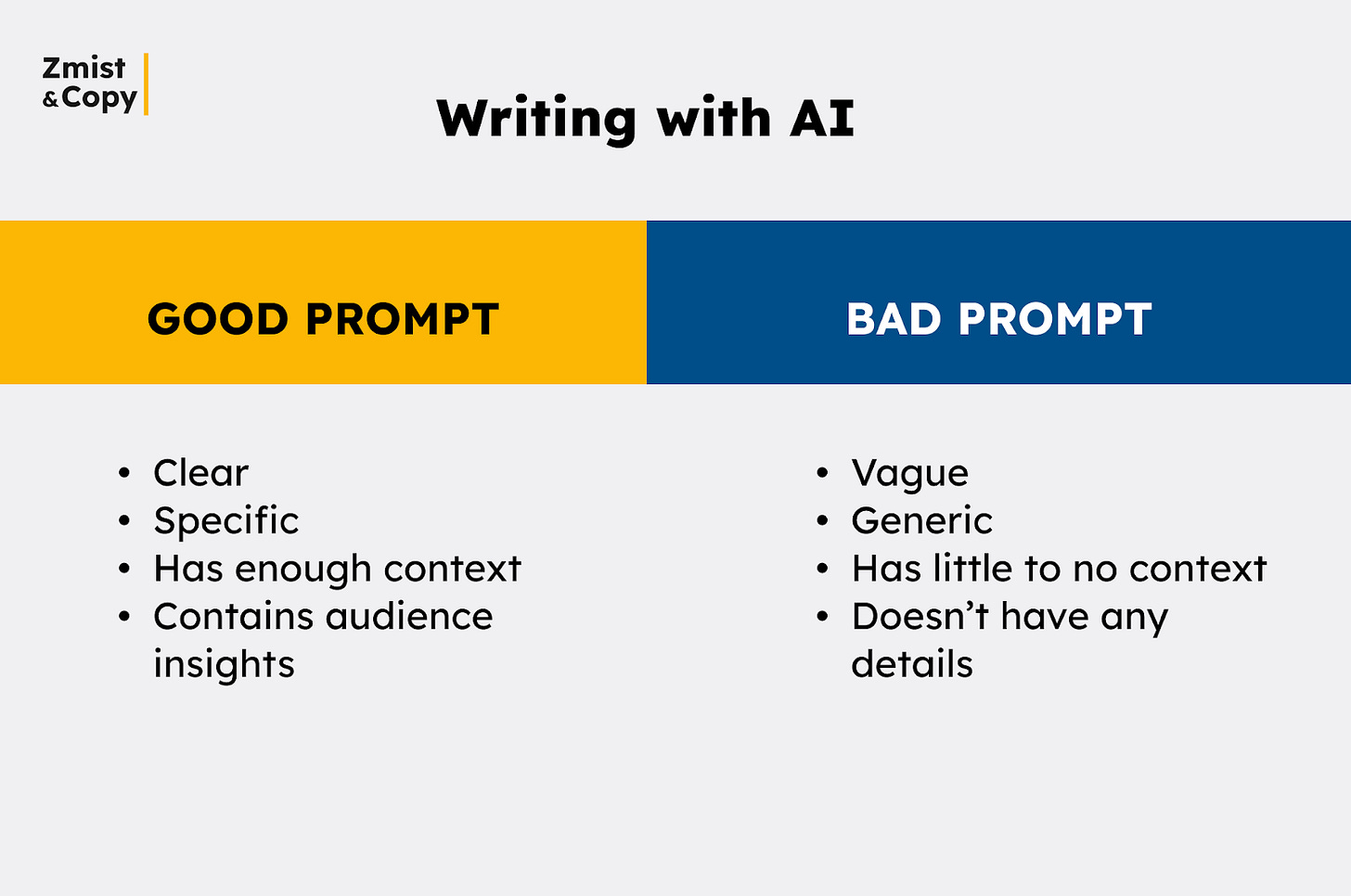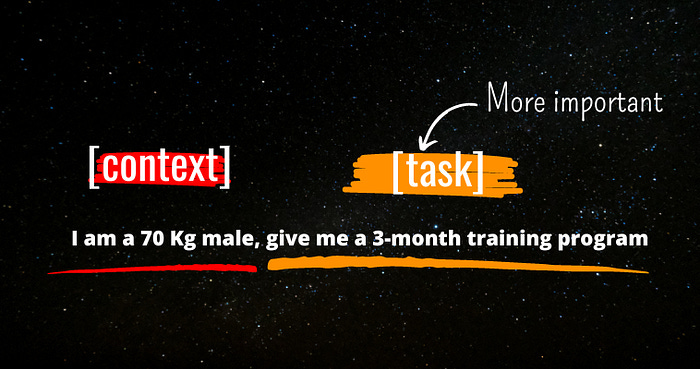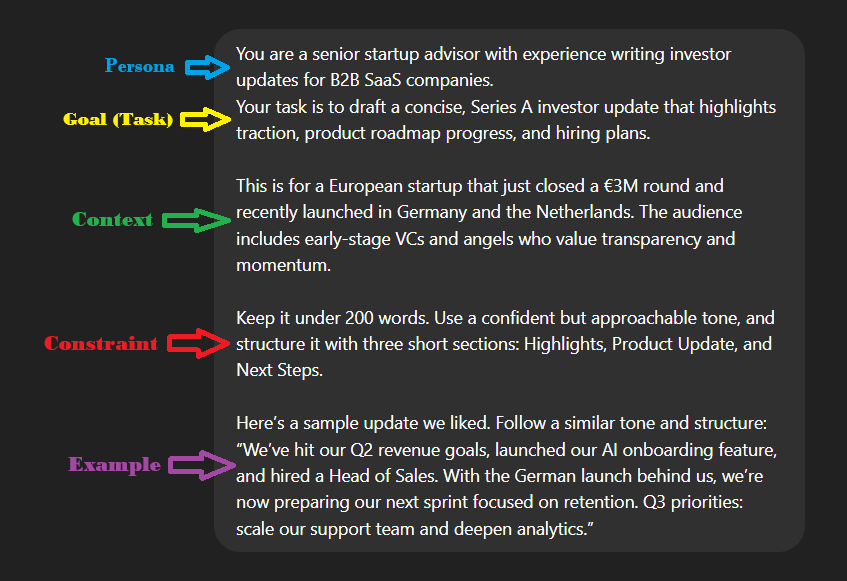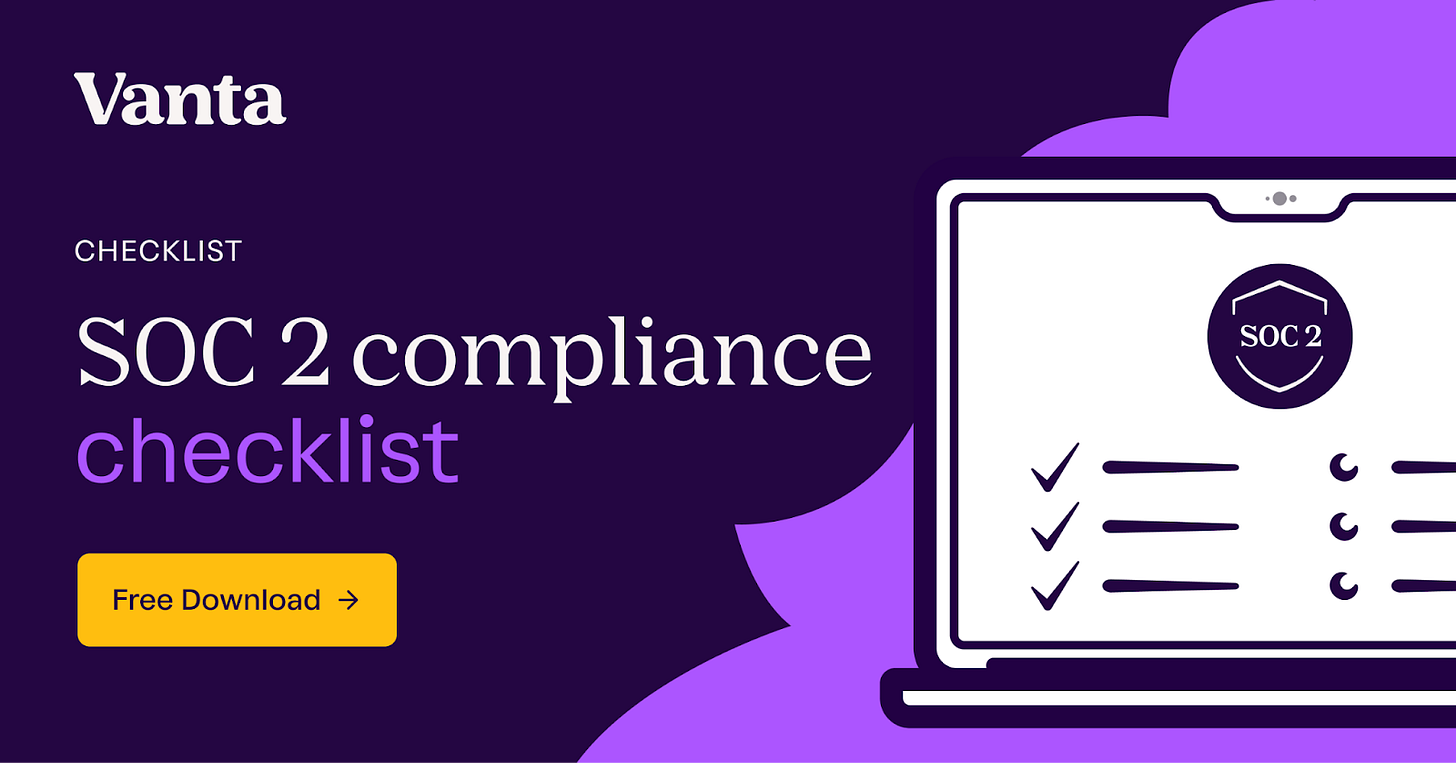The Ultimate Guide to Writing Powerful AI Prompts
Master the art of prompt writing to get sharper, smarter, and more accurate AI responses
Every day, millions of people use AI tools with one goal: to get smarter, faster, better results. But surprisingly enough, most of them are flying blind. They type whatever comes to mind, hit enter, and hope for magic. When the output misses the mark, they blame the AI.
The truth is that the problem is almost always the prompt, not the AI itself.
That’s exactly why we’ve compiled this straightforward, practical guide to writing better prompts.
Brought to you by Vanta: ✅ SOC 2 without the chaos
SOC 2 is one of the first things customers ask for—but it doesn’t have to slow you down.
Vanta’s checklist gives you a clear, startup-friendly path so you can get compliant fast, even without a security team.
Table of Contents
Why Prompt Engineering Matters
How To Write AI Prompts: The Pillars of a Perfect Prompt
Prompt Writing Frameworks (So You Never Start from Scratch)
Does This Work Everywhere?
Advanced Prompting Tactics
Prompt Templates by Use Case
Troubleshooting: Fixing Weak Prompts
Final Checklist Before Sending a Prompt
1. Why Prompt Engineering Matters
Most people treat AI tools like search engines. They type in a question and hope for the best. But AI prompts aren’t questions, they’re instructions.
Think of a prompt like code: your input is the logic the AI follows. The better your prompt, the better your result. And the worse your prompt… the more time, money, and sanity you waste.
Let’s be blunt: bad AI prompts are expensive. They lead to irrelevant outputs, endless retries, and vague, unusable results.
Weak Prompts, Weak Results
❌ “Summarize this report.”
➤ Output: 7 paragraphs of fluff that miss your key takeaways.❌ “Give me blog ideas.”
➤ Output: 20 generic titles you’ve seen a hundred times before.❌ “Fix this code.”
➤ Output: A slightly different broken version of your original code.
Now compare that to prompts engineered with intention in these AI prompt examples:
✅ “Summarize this report as an expert authority figure on the topic by extracting the 5 most important takeaways in clear, actionable language.”
➤ Output: Concise, authoritative summary with usable insights you can work with immediately.✅ “You are a marketing strategist. Suggest 3 blog topics on AI in healthcare targeting busy CMOs. Each should include a proposed hook.”
➤ Output: Clear, targeted, usable ideas in one go.✅ “You are a senior developer. Review this Python function for bugs and suggest improvements line-by-line. Keep it under 150 words.”
➤ Output: Actionable, readable code feedback in one pass.
Whether you're writing, coding, analyzing, or brainstorming, prompt engineering is the difference between using AI and truly leveraging it. It turns an unpredictable tool into a precision instrument. Without it, you’re guessing in the dark.

AI Resources you might find helpful 👇
OpenAI’s New Playbook for Product-Market Fit in AI Startups
2,500+ AI Angel Investors
50 AI Agent Startup Ideas for 2025
AI Co-Pilots for Startups & VC
118 AI Communication Agent Use Cases
OpenAI’s 4-Part Framework for AI Product Strategy
2. How To Write AI Prompts: The Pillars of a Perfect Prompt
Strong prompts don’t have to be long. They just have to be intentional. Whether you're using AI to write, summarize, code, analyze, or brainstorm, the most consistent outputs come from prompts built on five simple elements.
These aren’t hacks or tricks. They’re fundamentals. Together, they form a framework that works across tools, use cases, and industries.
Let’s break down the core components of high-performance prompting.
1. Role (Persona)
Set the stage. Tell the AI who it is, or who you are. This aligns tone, style, and expertise with the task at hand.
When to use: Always. Especially valuable when the tone, domain, or audience matters.
✅ “You are a clinical researcher summarizing new findings for a medical journal.”
✅ “I am a founder writing a Series A investor update.”
This one detail shifts the AI’s posture. It stops being a generalist and starts behaving like a domain expert.
2. Goal (Task + Intent)
Be clear about what you want and why you want it. A clear goal gives the AI a finish line.
When to use: Always. Vague tasks yield vague results.
✅ “Draft a one-page executive summary for our internal strategy doc.”
✅ “Generate 5 A/B test headlines for a homepage focused on user trust.”
Don't assume the AI knows what success looks like. Spell it out.
3. Context
AI doesn’t know your world, it doesn’t have common sense unless you provide it. Add essential details, background, audience, or reference points so it can respond with relevance.
When to use: When nuance matters. Think of strategy, tone, timing, or history.
✅ “This is for a startup that recently expanded to APAC and now needs a localized launch plan.”
✅ “We’ve already tested a similar feature in beta. Mention that performance in your summary.”
Context turns AI into a teammate instead of a disconnected assistant.

4. Constraints (Format, Length, Tone, Style)
Constraints shape the response. You’re setting boundaries for structure, length, tone, or delivery. In response, they make outputs faster to use.
When to use: Often. Especially when you're past brainstorming and need production-ready material.
✅ “Present this in a markdown table comparing three CRM platforms by pricing, features, and integrations.”
✅ “Keep it concise (under 150 words), with a tone that’s friendly but confident.”
Without constraints, you get generic rambling. With them, you get focused output.
5. Examples
Show what good looks like. Whether it’s a format, tone, structure, or quality benchmark, examples calibrate the AI.
When to use: Critical when style or structure matters, or when past attempts fell short.
✅ “Here’s a landing page we liked; use a similar voice and headline structure.”
✅ “Input: Feature request log | Output: Jira-ready ticket with description, priority, and acceptance criteria.”
Think of examples as calibration tools. They help the AI hit the mark faster.
Together, these five elements - Role, Goal, Context, Constraints, Examples - transform generic prompts into high-precision instructions.

You don’t need all five every time, but the more you include, the more consistent and useful your results will be.
3. Prompt Writing Frameworks (So You Never Start from Scratch)
Sometimes, the hardest part is simply knowing how to begin. If you've ever stared at a blank chat window wondering how to phrase your request, you're not alone.
That’s where prompt frameworks help.
Think of these as scaffolding, simple, reliable structures that help you translate your intention into clear, effective AI prompts. Below are two field-tested models you can use right away: the CLEAR framework and the RGIO formula.
The CLEAR Framework
The CLEAR method helps you structure high-quality prompts, especially when you're dealing with open-ended or creative tasks. It stands for:
C – Concise: Keep the prompt tight. Remove filler.
“Summarize this in under 100 words.”L – Logical: Structure your ask in steps or a clear sequence.
“First, define the problem. Then, list possible causes. Finally, suggest solutions.”E – Explicit: Say exactly what you want. No room for assumptions.
“Write a professional LinkedIn post with a hook, insight, and call to action.”A – Adaptive: Don’t settle. Tweak based on the result.
“That was too formal, try again with a warmer tone and keep it under 150 words.”R – Reflective: Review and refine your own prompt.
Ask yourself: “Did I specify the role? Is the format clear? Do I need to add context?”
Use it when: You’re experimenting, iterating, or building a prompt from scratch. This framework helps you tighten and troubleshoot as you go.
The RGIO Formula
The RGIO model is a fast way to structure your prompt when you need something clean and effective. It stands for:
R – Role: Who is the AI?
G – Goal: What’s the task and end result?
I – Input: What does the AI need to know?
O – Output: What format should the result take?
Let’s walk through an example:
Prompt:
You are a senior product manager. Your goal is to create a PRD (product requirements document) for a new onboarding flow. Here’s the input: product brief and user research summary. Output: A PRD with sections for objective, user stories, KPIs, and timeline.
Each element guides the AI logically, reducing ambiguity and making the result more usable right away.
Use it when: You have a specific outcome in mind and need to structure your request clearly and quickly.
You don’t need to memorize these. Just remember that strong prompts are built, not improvised. Frameworks like CLEAR and RGIO are how you build faster, and better.
4. Does This Work Everywhere?
Yes, these strategies apply across most modern AI tools, including ChatGPT, Claude, Gemini, Notion AI, Copilot and more. The principles of clear roles, goals, context, and constraints are universal.
That said, different tools may handle memory, formatting, and response depth a bit differently:
ChatGPT (OpenAI): Excels at multi-step reasoning and conversational tasks. Good for follow-ups.
Claude (Anthropic): Great for long-form, nuanced responses. Ideal for reflective or “thinking aloud” tasks.
Gemini (Google): Tightly integrated with Workspace tools like Docs, Sheets and Slides.
Notion AI / Microsoft Copilot: Optimized for editing, summarizing, and structured rewriting. Less flexible for exploration.

Your prompts will generally translate well across platforms, but response quality may vary depending on the tool's training data, memory length, and interaction style.
Just adjust slightly for tone, memory, or formatting differences. Don’t overthink it, great prompting travels well.
5. Advanced Prompting Tactics
Once you’ve mastered the basics, the next step is learning how to shape the model’s thinking. These five techniques give you more control, deeper insight, and consistently sharper outputs. They’re simple to apply, but powerful in impact.
Step-by-Step Reasoning
Why it matters: By default, AI tends to jump straight to the final answer. That’s fine for surface-level tasks, but for analysis, decisions, or multi-part questions, you want it to think out loud.
How to apply it:
“Think step by step: first identify the main issue, then evaluate possible solutions, then recommend the best one based on cost and feasibility.”
You’re not just asking for an answer. You’re prompting for a process. This is how you force clarity instead of shallow thinking.
Delimiters and Formatting
Why it matters: When your prompt has multiple components, things can blur together. Using delimiters, like quotes, code blocks, or structured formats, helps the AI separate instructions from content.
How to apply it:
“Summarize the following text in 3 bullet points. Text: ‘<insert article here>’”
“Return the result in JSON format with keys for ‘hook’, ‘insight’, and ‘CTA’.”
For technical or content-heavy tasks, structured responses like tables, bullet lists, or markup make outputs far easier to work with.
Iterative Refinement
Why it matters: The first output is rarely the best. Great prompting is a layering process: tweak, reframe, narrow, repeat.
How to apply it:
“This is too long. Trim to under 100 words and make it sound more conversational.”
“Now rewrite that with stronger verbs and make the headline punchier.”
Your follow-up prompts are part of the prompt. Use them to shape the output instead of starting over. And if the output still feels off after two tries, re-check your input. The issue is likely in the input logic, not the model’s output.
Perspective Forcing
Why it matters: AI usually defaults to a neutral or balanced tone. But real-world use cases often demand opinions, emotion, or strategic positioning.
How to apply it:
“Take the perspective of a skeptical CFO evaluating this investment.”
“Write this as a passionate founder convincing early believers.”
If you don’t tell the model how to think, it will play it safe, and you’ll end up with generic, forgettable content.
Constraint-Based Refinement
Why it matters: By adding more constraints, you’re not limiting the AI. You’re helping it focus by reducing the space it has to guess.
How to apply it:
“Explain this concept to a high school student using only simple metaphors.”
“Write a 50-word summary using only active voice and no jargon.”
Constraints unlock creativity and clarity. They force the AI to deliver within sharp boundaries, which is exactly where the best work happens.
6. Prompt Templates by Use Case
Sometimes you don’t need a tutorial, you just need a prompt that works. Here are some examples of the best prompts that work across common roles and tasks. Each one is ready to copy, tweak, and deploy:
Keep reading with a 7-day free trial
Subscribe to The VC Corner to keep reading this post and get 7 days of free access to the full post archives.



